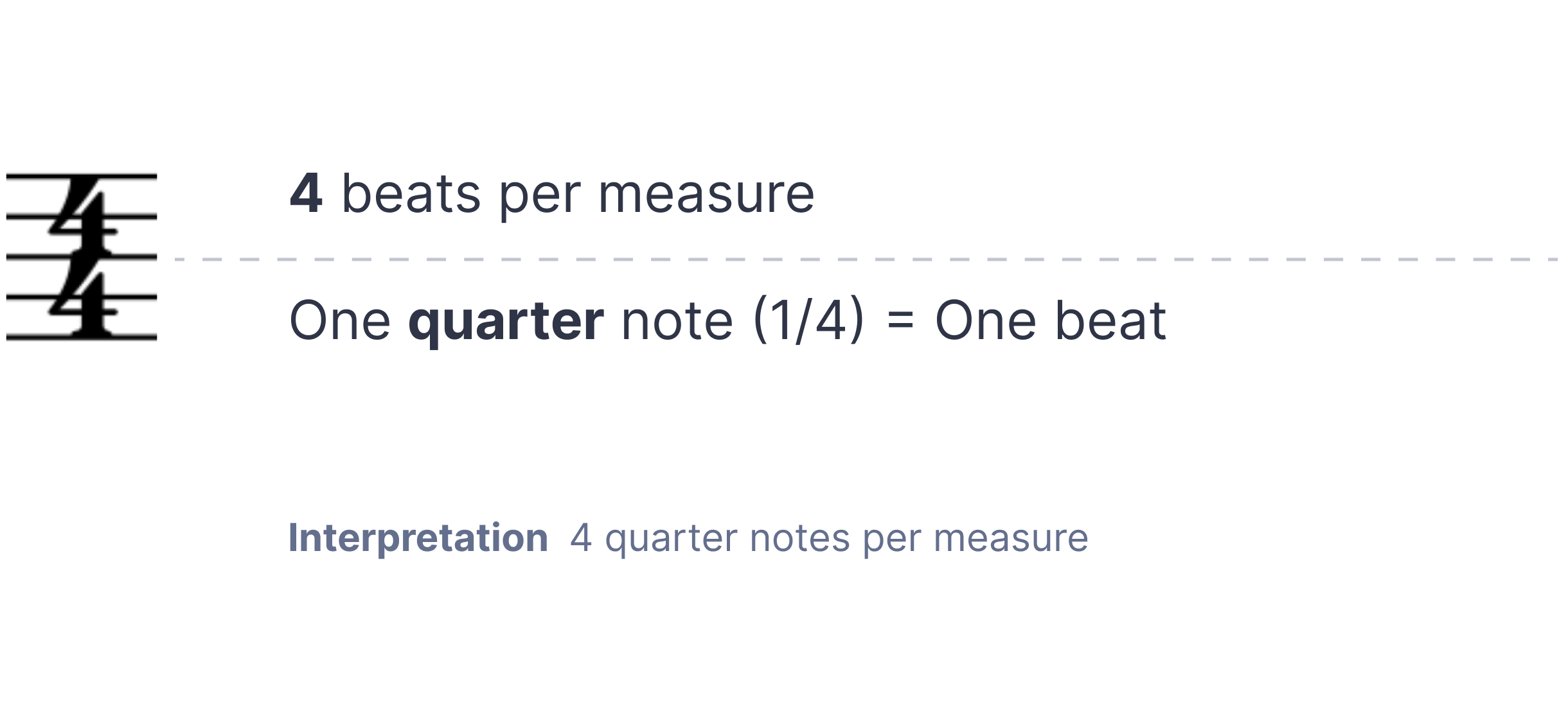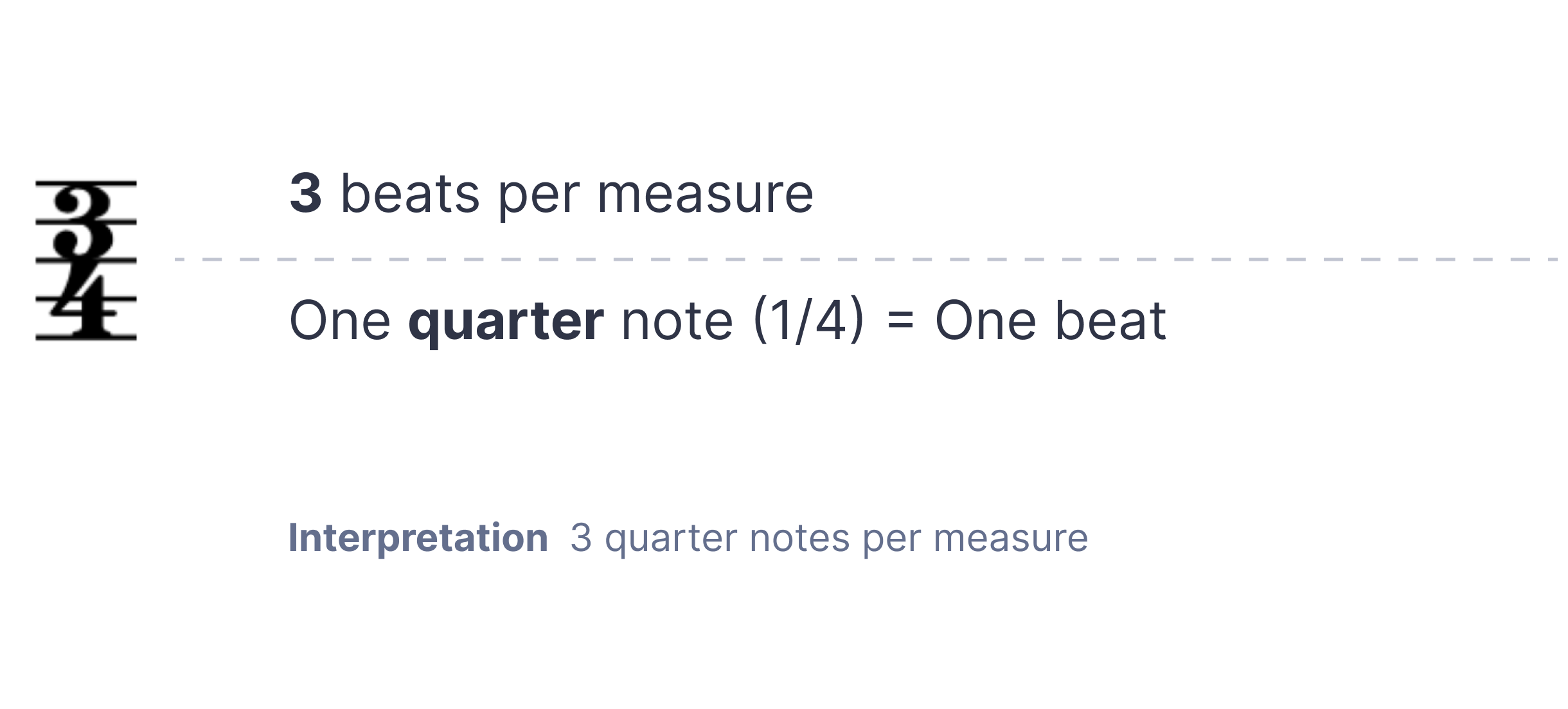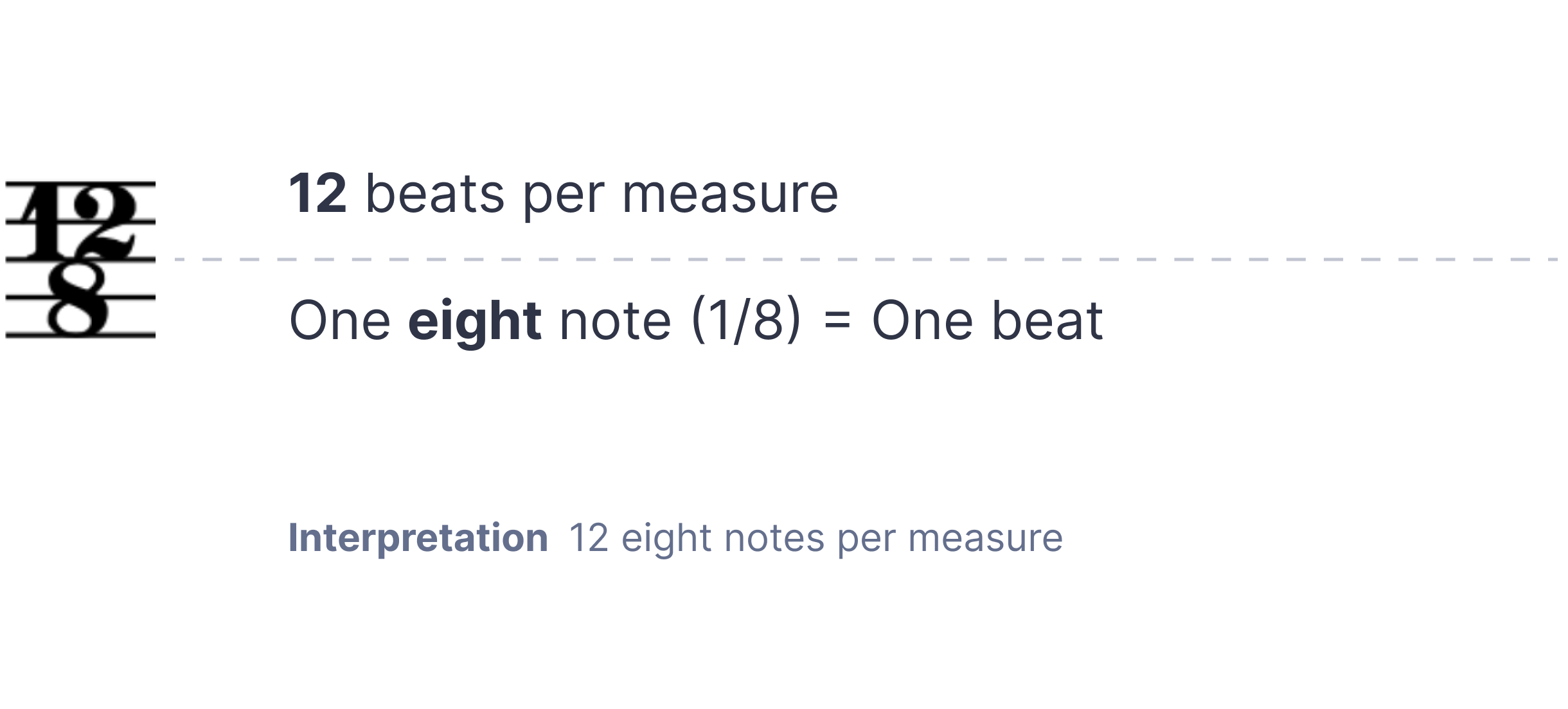Understanding measures (or bars) is fundamental for reading and composing music in your music notation software. These divisions provide the structure that organizes rhythm and time in songs.
In this guide, we’ll explain what a measure is in music, how it works, and its importance in composition.
Ready to dive in? Let’s get started!

What Is a Measure (or Bar) in Music?
A measure is a way to organize music, helping to express ideas and give a song clear structure. Think of it like a sentence in a language—it breaks down and organizes musical thoughts.
Remember, all knowledge builds step by step, so it’s important to master the basics before moving on to more advanced concepts. When it comes to measures, you’ll need a solid understanding of the following:
Without further ado, let’s dive into today’s topic! Be sure to have your music notation software ready so you can practice and apply everything we cover.
How to Identify Measures (Bars) in Music Scores
In music notation, a measure (also called a bar) is a segment of time within a piece of music, separated by vertical lines on the staff.
Below are three measures, marked by red rectangles. You can see how each measure is divided by a vertical line:

Why Are Measures (Bars) Important in Music?
We use measures because they make reading music much easier. Their role in music notation is to group notes, giving structure and clarity to our musical ideas.
You might wonder, "Why not just write the notes one after another?" Well, just as you wouldn't write words togetherwithoutspaces in a sentence, music needs this kind of organization too! Music is a language, and effective communication requires thoughtful structure. Composing is about conveying your message in a way that truly represents your artistic vision.
So, how do we group notes into measures? The number of beats in a measure is determined by the time signature.
💡If you need to review the concepts of time signature and beats, this is the article for you.
How Do Measures (Bars) Work in Music?
As we just mentioned, the number of notes in each measure is determined by the time signature. Musicians read and perform the notes within a measure according to the rhythmic pattern that fits within that time frame.
🙋🏻♂️ Let’s take a moment to step back and review this thoroughly.
Understanding Time Signatures: How They Shape Measures in Music
The time signature tells you how the beats are divided in a song. The beat is the basic unit of time, usually counted as beats per minute (BPM). The speed of the beat is called the tempo. Tempo is typically shown as a rhythmic note followed by a number, like ♩=60, meaning 60 beats per minute.
A time signature is represented as two numbers, one placed above the other. The top number indicates how many beats are in each measure, while the bottom number specifies the duration of each beat in terms of rhythmic notes.

The bottom number of the time signature defines the value of each beat. For example, 1/4 represents a quarter note, as it is one-quarter of a whole note. Therefore, in a 4/4 time signature, the beat unit is a quarter note. This principle applies to other rhythmic figures as well: in a 4/8 time signature, the beat unit becomes an eighth note, and so on.
The top number tells you how many of these rhythmic notes are in each measure. For instance, in 4/4, there are four quarter notes per measure. In 2/4, there are two quarter notes per measure. In 12/8, there are 12 eighth notes per measure.
You can think of it this way:
- 4/4 = Four quarter notes per measure.

3/4= Three 1/4(quarter) notes per bar.

12/8= Twelve 1/8 (eighth) notes per bar.

The top number tells you how many beats are in each measure, while the bottom number indicates the type of note that represents one beat.
Conclusion: Key Takeaways About Measures in Music
Measures form the essential rhythmic framework of a piece of music, helping musicians maintain a steady tempo and providing structure to the composition. Dividing music into measures simplifies interpretation, rehearsal, and performance, ensuring a cohesive and organized piece.
I hope you’ve found this helpful! Don’t forget to head over to your music notation software, and put everything into practice.
If you want to dive deeper into time signatures, I recommend reviewing these articles:
- What is rhythm? A simple music definition
- How does the time signature work?
- Regular and Irregular Time Signatures
See you next time,

Frequently Asked Questions About Measures (Bars) in Music
1. What is a measure in music?
A measure (or bar) is a segment of time in a piece of music, defined by a specific number of beats. Measures are separated by vertical lines called bar lines, and they help organize the rhythm and structure of a song.
2. Why are measures also called bars?
Measures are often called bars because of the vertical lines, or “bar lines,” that divide the music into sections. Both terms mean the same thing.
3. How can I tell where one measure ends and another begins in sheet music?
Just look for the vertical lines on the staff! Each space between those lines is one measure.
4. What is the difference between a measure and a beat?
A beat is the basic unit of time in music, representing a single pulse you might tap along to. A measure, on the other hand, is a larger unit that groups a specific number of beats together, as defined by the time signature. For example, in 4/4 time, each measure contains four beats. Measures create structure, while beats form the foundation of rhythm within that structure.
5. How do time signatures affect measures in music?
The time signature tells you how many beats are in each measure and what type of note represents one beat. For example, in 4/4 time, there are four beats in every measure, and each beat is represented by a quarter note.
6. Why are measures important for musicians?
Measures make it easier for musicians to read, play, and stay in sync with each other. Imagine trying to play a song without knowing where one section ends and the next begins!
